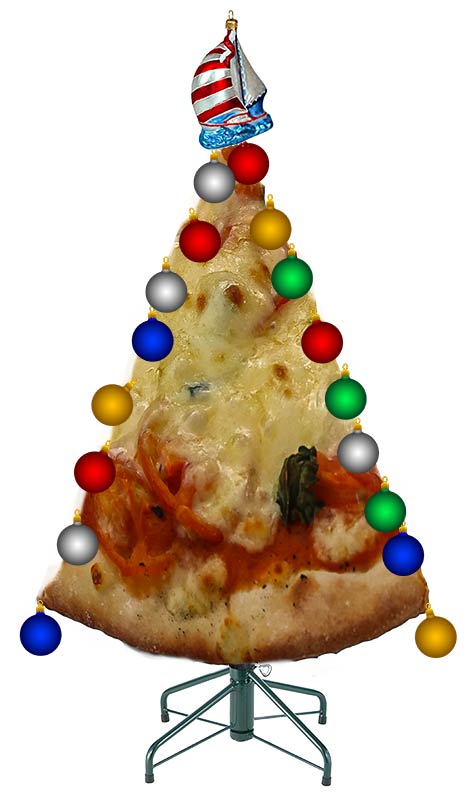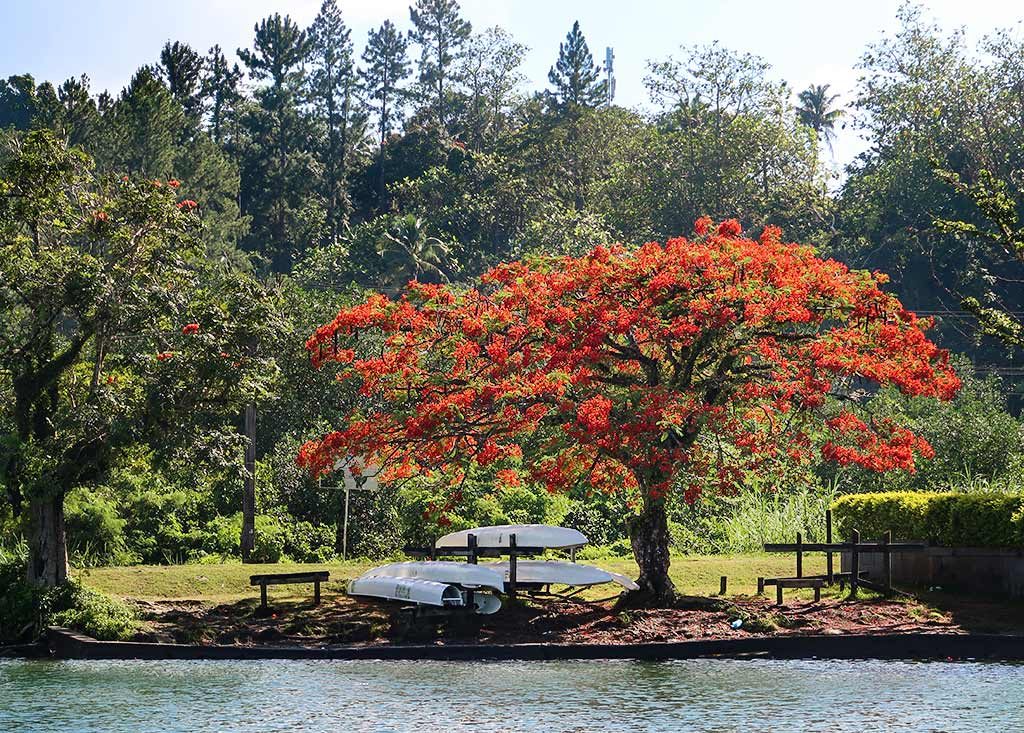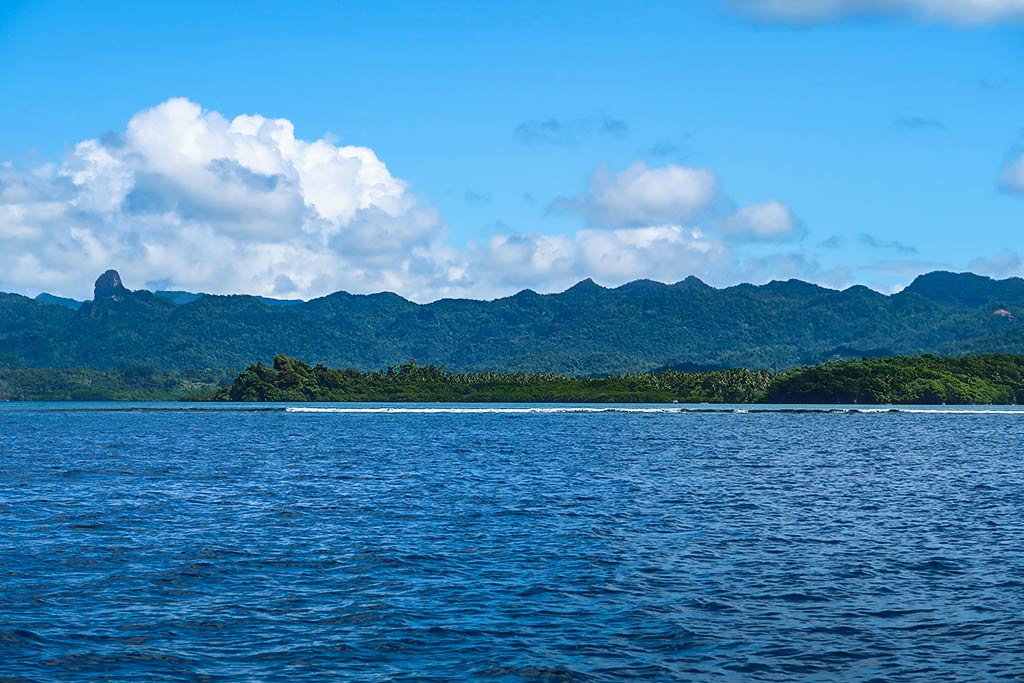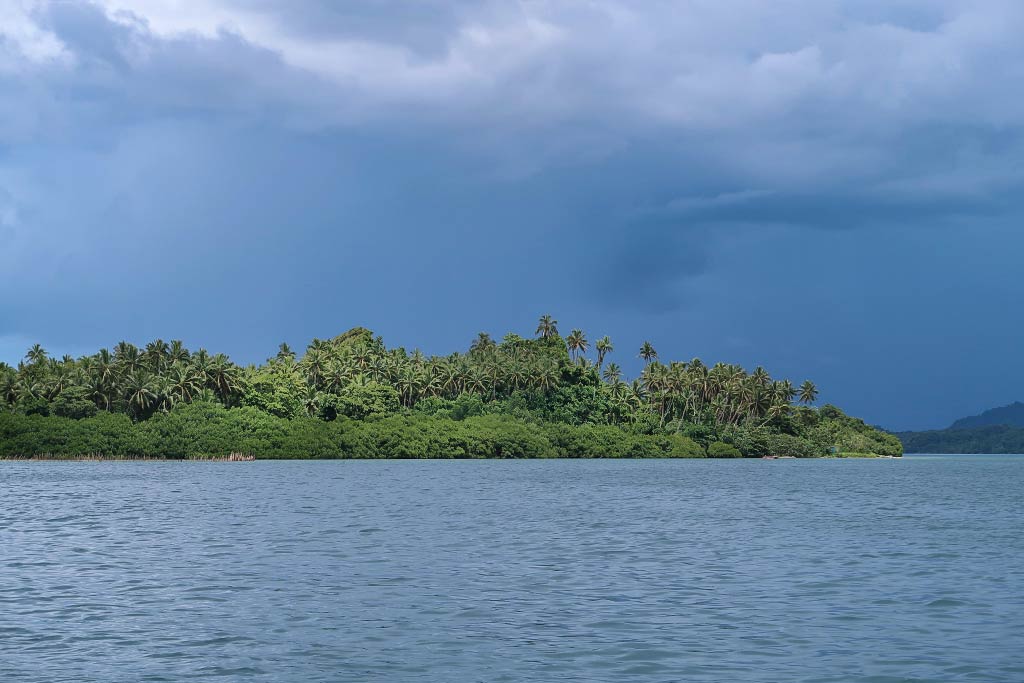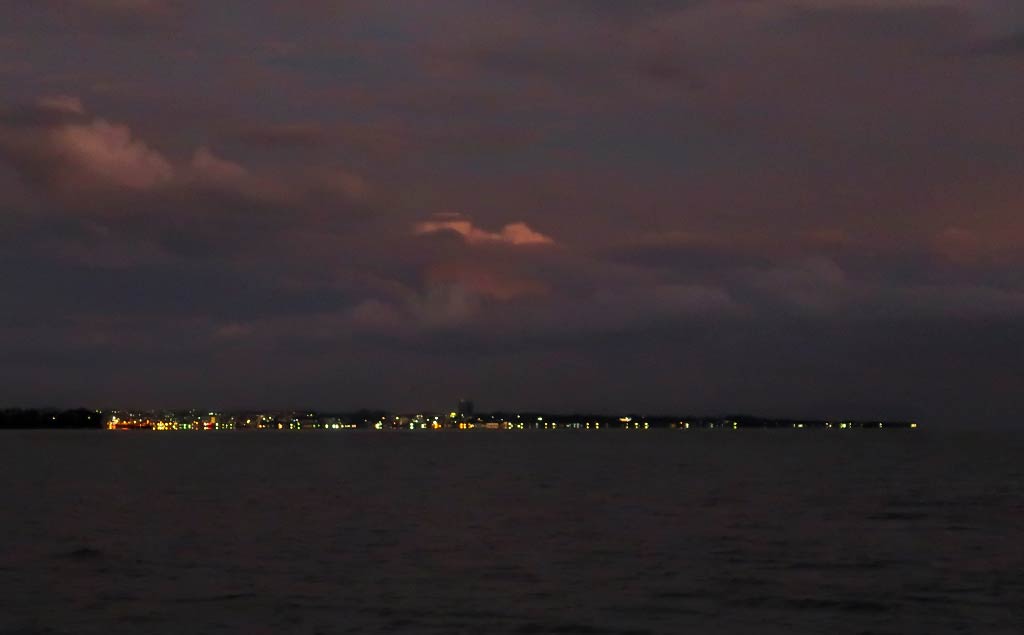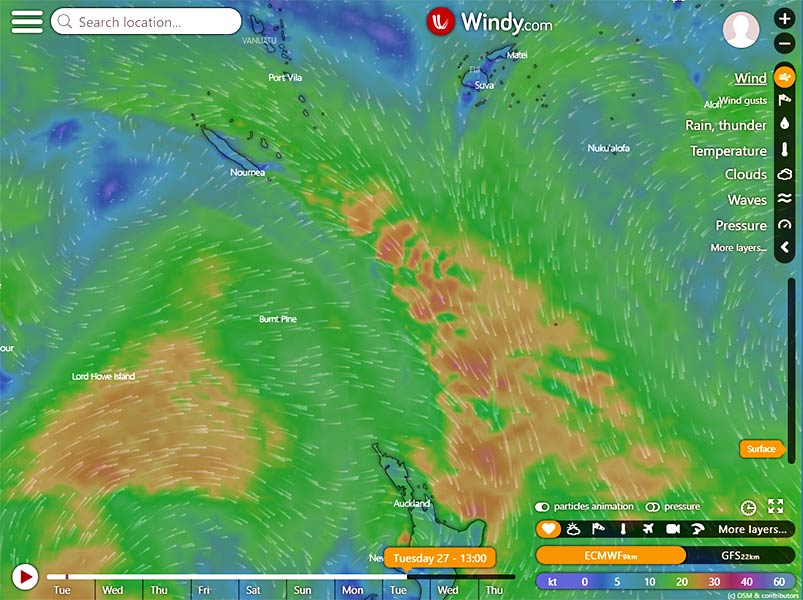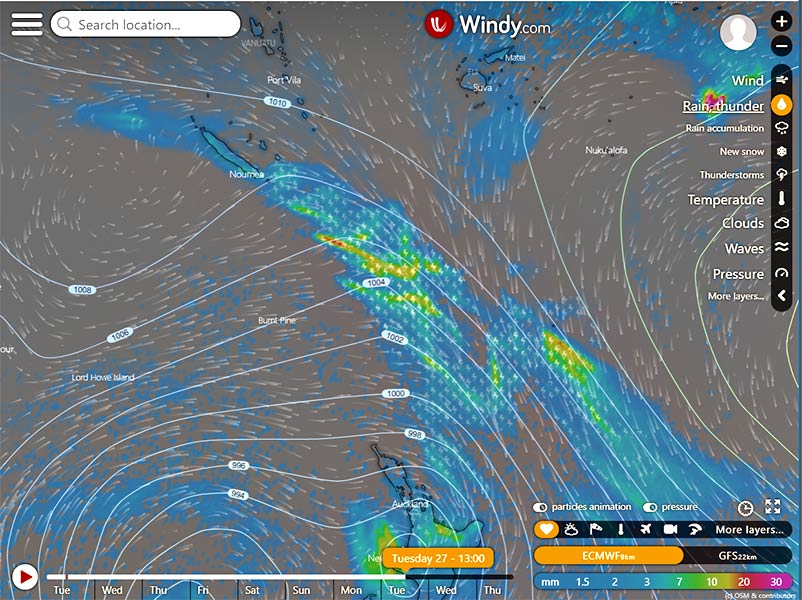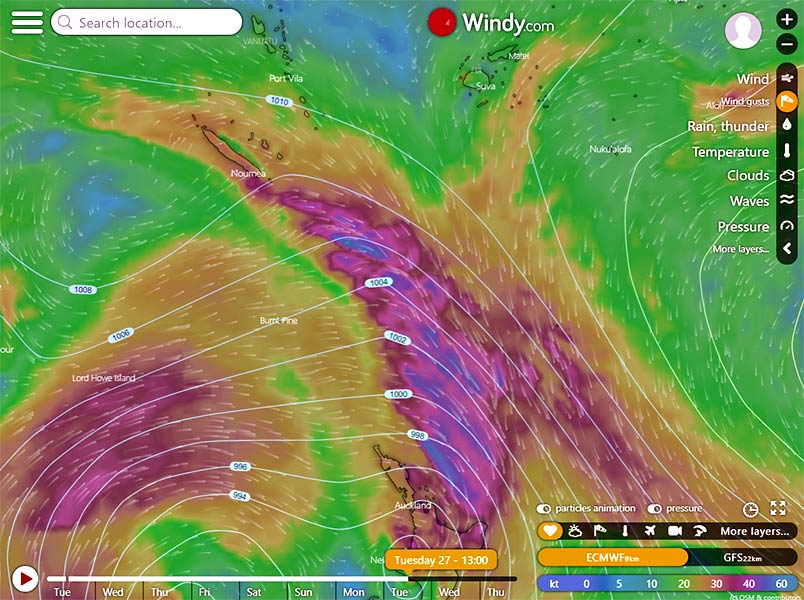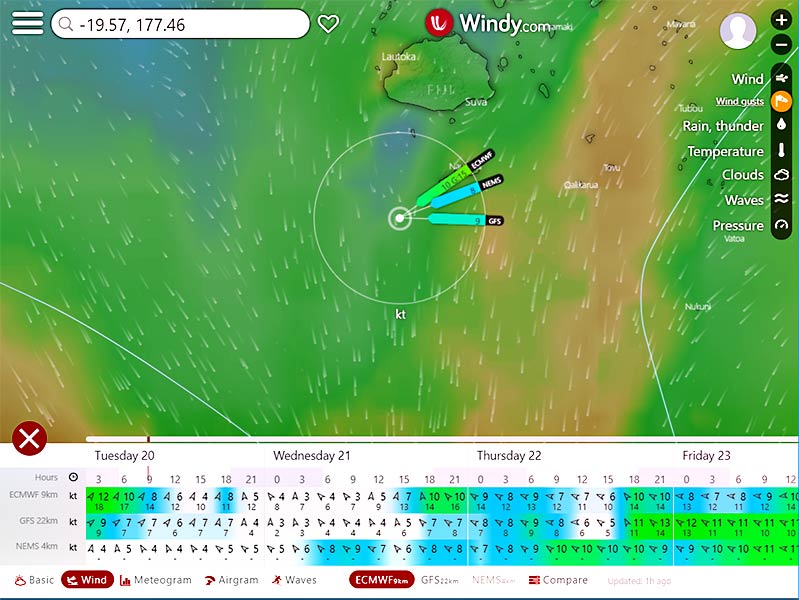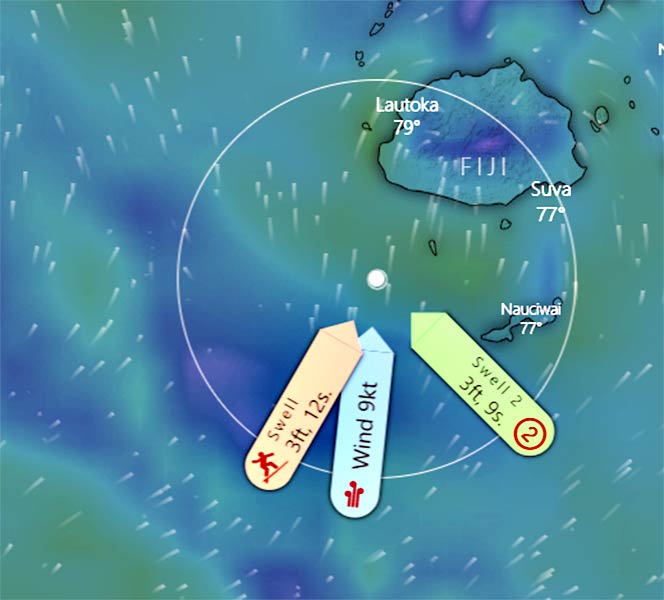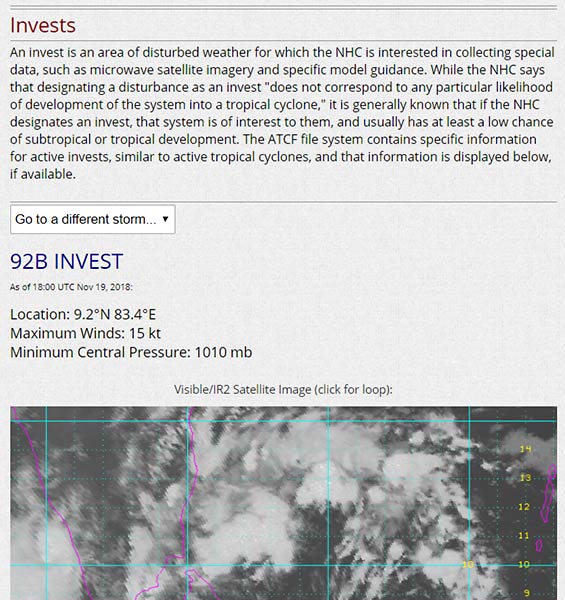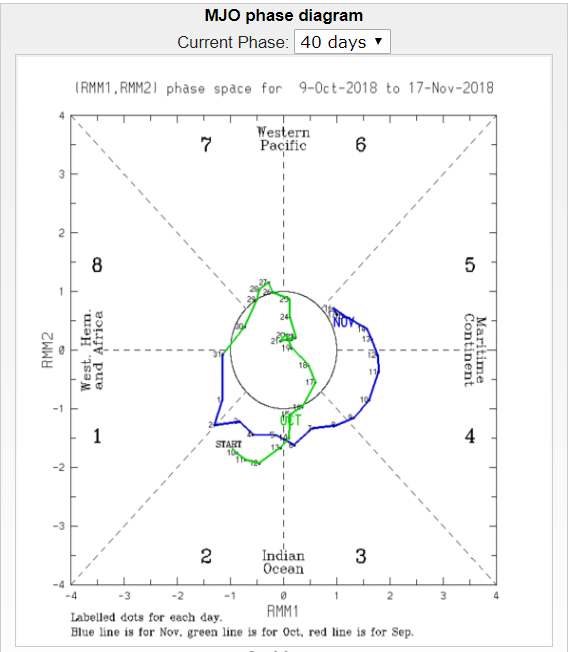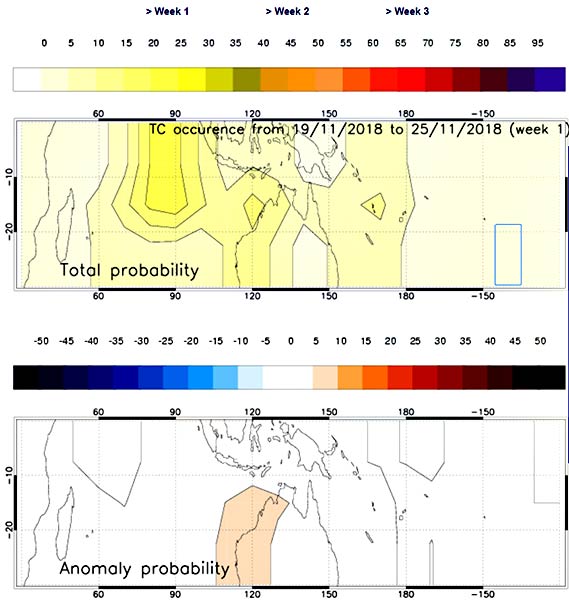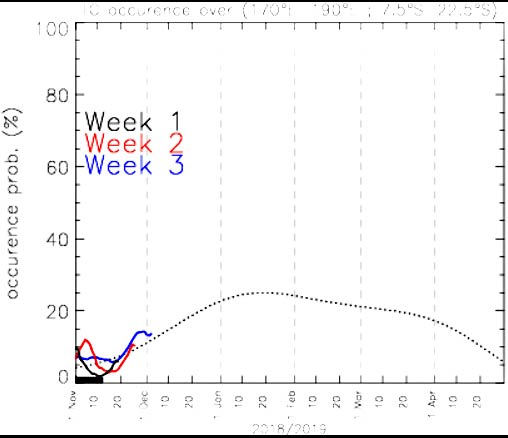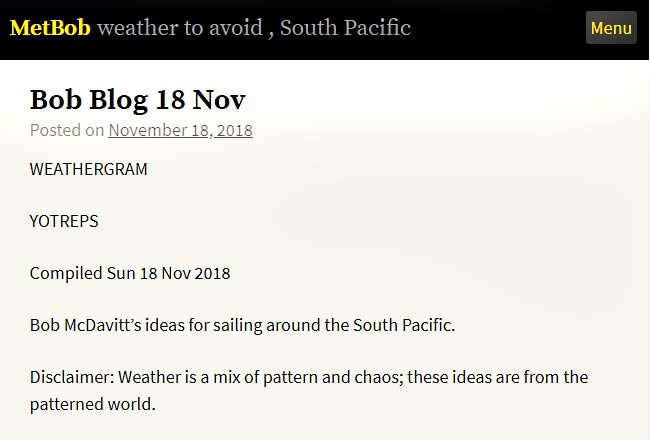November 27, 2018
A rare current post from Cyndi:
Right now, we’re in Suva, Fiji (which coincidentally has also been the subject of the 2013 posts I’ve been working on).
As for now, 2018, most of the cruising fleet has already headed south for the summer. Still, there are a few of us still waiting for an acceptable weather window. A couple of people we know have headed to Minerva Reef about 2 or 3 days south of Fiji, hoping to get a good opportunity to head for NZ from there. We thought about joining them, but we worried about getting stuck there for a long time. Yes, we’re starting to feel increasingly hot and restless here, but hey, at least we have internet, movie theaters, restaurants, and grocery stores.
Unfortunately we also have a potential cyclonic weather formation north of us. I must emphasize the word “potential” as it’s not yet real and only forecast by one of the four weather models we’re using. In other words, it’s an educated guess about something that could happen that GFS (this particular weather model) is making. Their original prediction was that it might start appearing December 3, but now it seems to have been pushed back to the 7th.
Meanwhile a handful of boats have, over the past few days, been leaving from the west side. Right now there are a couple of nasty lows between us and New Zealand for that trip; so I’m a bit mystified about their choice to leave when they did. We know from experience that “hot and bored” (or for that matter, “cold and bored”) is a very precarious state to be in. When you add in news of a potential closed-isobar low (these can become cyclone embryos), it can be like taking a lit match to a powder keg. Well, that’s an extreme way to put it, but it is hard to fight that first wave of panic, stay calm, and start the process of sorting out the situation.
So, we did the first thing we do when faced with these decisions: have some wine (or whatever’s on hand; beer will do, but watch out for rum as you can end up with no useful brain activity at all). Actually, it’s not really about the drinking. It’s about taking a time-out and starting the process of digesting the information. And like digesting food, this takes some time. Going out to a restaurant is useful, as is watching TV, going to a movie, reading, working on a personal project, etc., to distract ourselves from overthinking.
One of the worst things for us to do is talk to other cruisers as the herd mentality quickly takes over. Critters gathering into a group, feeding off each other’s adrenaline, and gearing up to run generally do not like seeing any individuals calmly wandering off. It really bothers some members of the herd, but they can’t help it; it’s primal thing.
In the meantime our process when getting concerning news such as potential cyclone activity goes like this.
1. Distract ourselves until we’re in a calm mental place where we can think clearly.
2. Check the weather again.
3. Distract ourselves again. Distracting ourselves does not mean ignoring the situation—it means letting our subconscious minds take over for awhile. We find when we get our conscious minds out of the way, our subconscious minds can bubble up some surprisingly good ideas. We can also get better in touch with our instincts.
4. Weigh our options; what can we do and what are the pros and cons of each action? Try not to argue.
5. What are the odds of a worst case scenario?
6. Make a plan for a worst case scenario even if the odds are slim.
7. Now give the situation more time in general, see how it starts playing out.
8. Try to deal with whatever’s giving us any personal urges to run. When it’s an “out of the frying pan; into the fire” kind of thing, how can we make the frying pan more comfortable, or at least tolerable? This last one takes some flexibility, creativity and an open mind. We may not feel like traveling, but sometimes a small road trip or day excursion is just the thing we need.
9. Start making a few preparations even if no weather window is yet on the horizon.
10. Wait for a window to appear on the horizon.
This is the sort of process we’ve been going through for the past few days. It’s getting hotter here so in making the “flying pan” more comfortable we’ve been going to movies and spending time in the mall. Then Rich came up with the brilliant idea to go to the harbor next door to Suva. This has put us out in the breeze and, being a peaceful and lovely place, has made us feel like we’re cruising again without the commitment of traveling all the way to a mainstream cruising ground.
Meanwhile, it looks like we may have a window to New Zealand on the horizon. If it pans out, we’ll leave Saturday. This begins both an exciting yet dangerous phase in a cruiser’s life because now we’ve become part of a gathering herd (even if it’s a herd of only the two of us), restless and anxious to make a run for it. Each morning looking at weather is both nervous making and a relief when it’s still looking good.
Usually the weather continues to look good and we head off, but once in awhile the unthinkable happens: something in the weather changes and we have to abort. This isn’t so bad if it happens three days before lift-off, but I can tell you that aborting the day before a planned takeoff is really, really tough mentally, physically, and emotionally. The overwhelming temptation is to try to justify to yourself why it’s still a good idea to go, to simply not “see” the problem. Many cruisers succumb to this temptation and later regret it. Others do manage to put on the brakes and while that process isn’t pretty (we all have our own ways of expressing frustration, anger, sadness and disappointment), we do get over it and are generally relieved we stayed. (Rich and I have yet to regret—knock on wood—a decision to abort a takeoff).
So, we’ll sit here in Namuka Harbour another day, then head back to Suva to start provisioning. Meanwhile, I’m going to get back to writing Suva posts from November 2013.–Cyndi
Below, photos from Namuka Harbour: beautiful, peaceful, and cooler than Suva. (Click to enlarge and scroll.)
Update:
We did move back to Lami Bay, ready to provision, but our weather window fell through. Then began a period of light northerly winds that brought hot air from the north.
We decided to take our own advice and made the frying pan a little nicer while waiting out this unusually intense heat for another weather window. We found a great deal (thank you, Expedia!) at the Grand Pacific Hotel in Suva. Best of all: powerful air conditioning!


